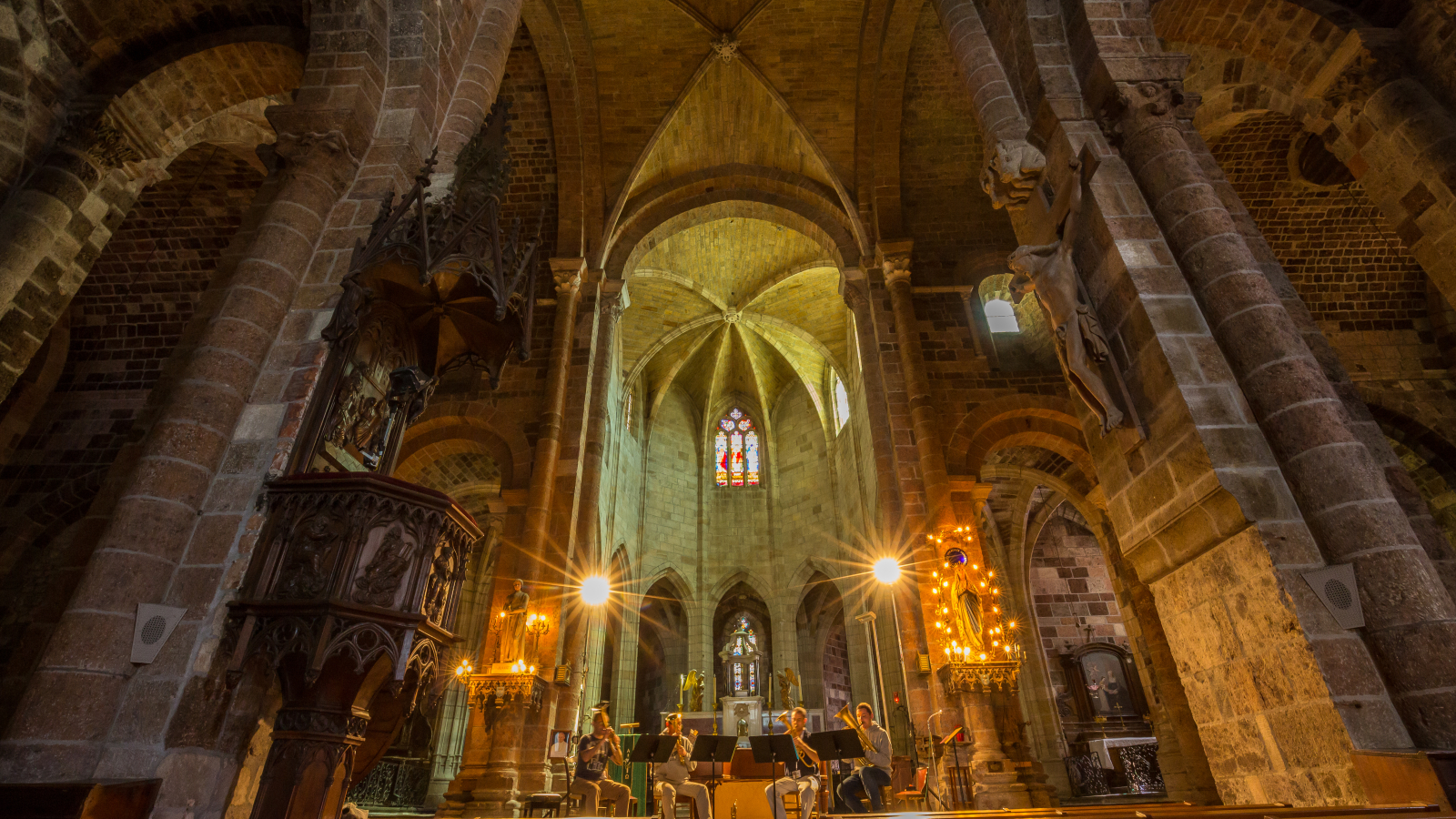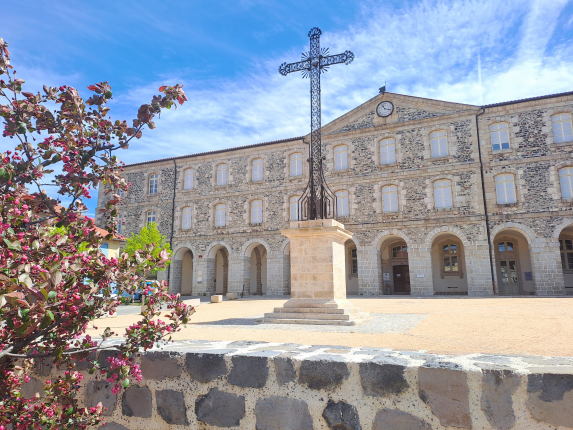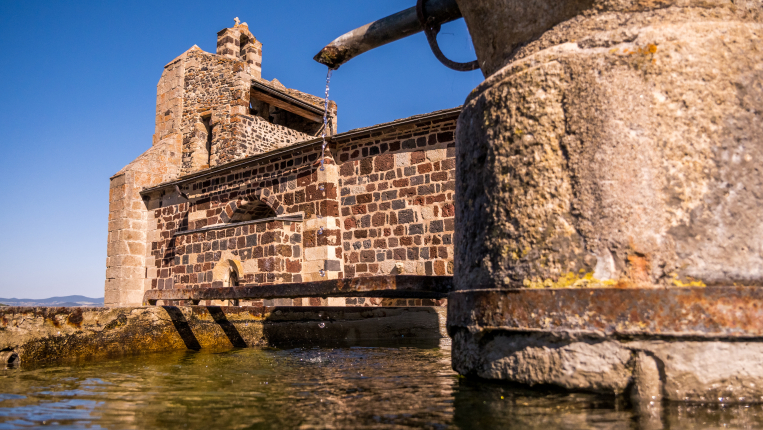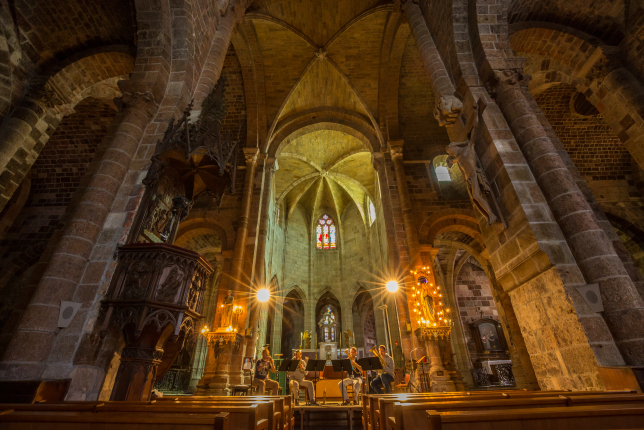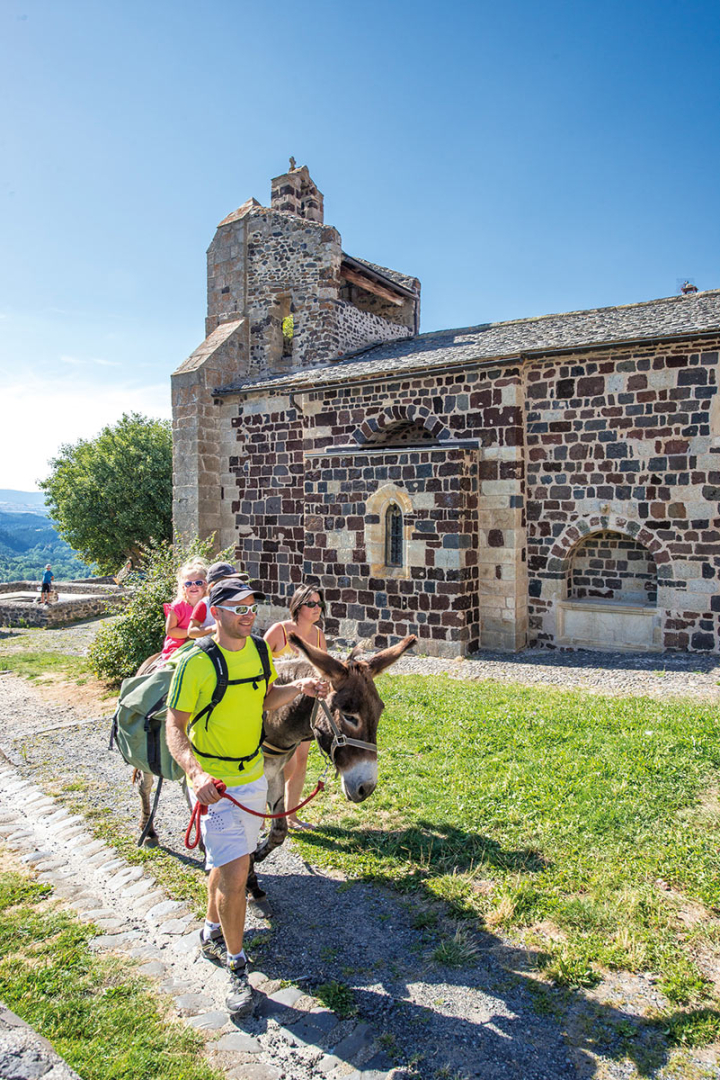Riche d’une histoire ancienne, dense et variée, la commune du Monastier-sur-Gazeille est labellisée Petite Cité de Caractère depuis 2017. Cette labellisation officialise la volonté du Monastier à faire de son patrimoine et de sa ruralité un atout.
Il y a des joyaux cachés au Monastier. Il faut quitter les rues principales et emprunter les petits passages pour en découvrir les trésors. Laissez vous aller à la contemplation de la façade exceptionnelle de l’église abbatiale. Arrêtez vous à l’église Saint-Jean, qui accueille régulièrement des expositions d’art contemporain.
Visitez l’un des trois musées qui mettent en valeur l’histoire du Monastier et prenez le temps de flâner sur la place du Couvent.
Ecoutez ! Les chants monastiques vibrent encore sous les arcades et les voûtes de l’ensemble abbatial. Ils ont résonné pendant des siècles avant que ne claque le léger pas de l’ânesse de M. Stevenson, célèbre écrivain écossais du XIXe siècle. Aujourd’hui, c’est le son des cuivres que l’on entend et qui anime le village au fil des jours, et chaque année plus particulièrement lors du Festival des Cuivres.
- À visiter : le musée de l’école, le musée des croyances populaires, le musée des Trésors, l‘abbatiale et son ensemble architectural, l’espace d’art contemporain Aponia.
- À découvrir : le festival des Cuivres, en août
- À lire : Voyage avec un âne dans les Cévennes, de R.-L. Stevenson
- A faire : Le chemin de Stevenson (GR70), le chemin de St Régis (GR430)
